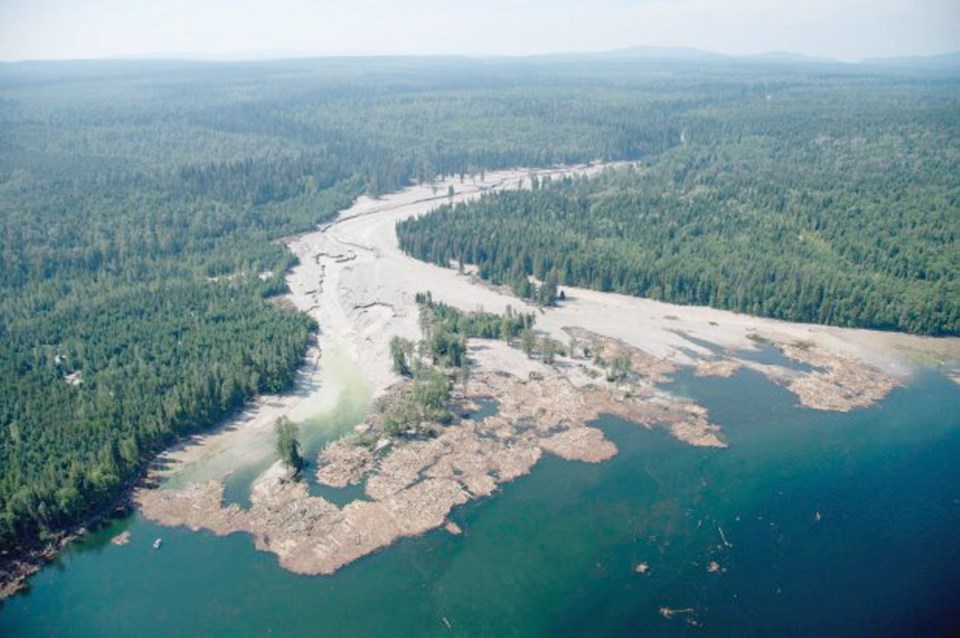Water test results following the Mount Polley mine dam failure eight months ago have continued to show periodic elevated levels of metals.
The latest results from February and March show government guidelines were exceeded for copper for aquatic life on the Quesnel River near the town of Likely, downstream from the mine.
Provincial officials continue to say the water is safe to drink as long as it is filtered, though there have been some exceedances of drinking water guidelines since last fall.
And computer modelling by the company’s consultants predict the metals from fine sediment in Quesnel Lake should clear up by August, say provincial officials.
That comes as little comfort to some area residents who say they still don’t trust the water, even though they’ve been told it is safe to drink, and who also continue to worry about the long-term effects of the dam failure on fish, a concern shared by scientists.
A dam failure in August at the gold and copper mine released millions of cubic metres of water and finely ground rock containing potentially-toxic metals, called tailings.
“The colour of the water is still wrong,” says Lawna Bourassa, a resident of Likely adjacent to the Quesnel River. “It’s a double standard — they say the water is drinking quality but you can’t drink it because of turbidity.”
Turbidity is a measure of water clarity and the amount of material suspended in the water.
Bourassa noted that before Christmas the water in the river and the lake was a pea soup colour. It has cleared recently, although not completely, but Bourassa expects the water to get worse again if the plume of sediment in the lake turns over this spring and pulses out in the river.
In some cases, the test results from the B.C. Ministry of Environment have shown significant elevated levels.
For example, on Jan. 27, the total aluminum reading in Quesnel Lake at the outlet of Hazeltine Creek — the path the mine waste flowed to reach the lake — was nearly 15 times the Canadian drinking water guideline. Tests showed that levels of iron were six times above Canadian drinking water guidelines and manganese was twice the guideline.
Aluminum levels were also exceeded in the month of January at the Quesnel River bridge at Likely and farther downstream at the Gravelle Ferry Bridge.
Hubert Bunce, a B.C. Ministry of Environment director who heads up the Mount Polley file, said the elevated metal readings were a result of sediment-laden deep water turning over to the surface in the fall and then flushing out in the Quesnel River.
He also noted that readings at the Gravelle River ferry station were affected by water from the Cariboo River, also containing sediments, that had nothing to do with the Mount Polley mine dam failure.
Bunce noted that Imperial Metals’ consultants have predicted that the sediment pulses into the river from Quesnel Lake will clear up by August.
“Now that’s a prediction, a model, but they were pretty accurate at predicting the lake overturn and resulting sediment outflow from Quesnel Lake at Likely in November and December,” he said.
Sediment has also been released into Quesnel Lake from Hazeltine Creek during the spring thaw, but only up to 150 metres into the lake, he said.
However, that could worsen if there are heavy rains, added Bunce.
He noted that the elevated readings are largely for total metals, which are not as great a concern as dissolved metals.
That’s because total metals — the suspended tiny particles — are not as easily absorbed by aquatic life, for example, through the gills of fish, he said.
Imperial Metals did not respond to The Vancouver Sun for a request for comment about the monitoring results.
The Vancouver-based company’s website provides updates on its rehabilitation plan and monitoring program.
Imperial Metals has filed an application to partly restart the mine by discharging tailings into a nearby open pit.
Bourassa said the ongoing issues and uncertainties about the effects on the watershed from the spill makes her concerned about the potential reopening of the mine.



